Friday, July 7, 2023
ART: Auudi Dorsey Honors African American Experiences in “We Just Got to See Us” Exhibition
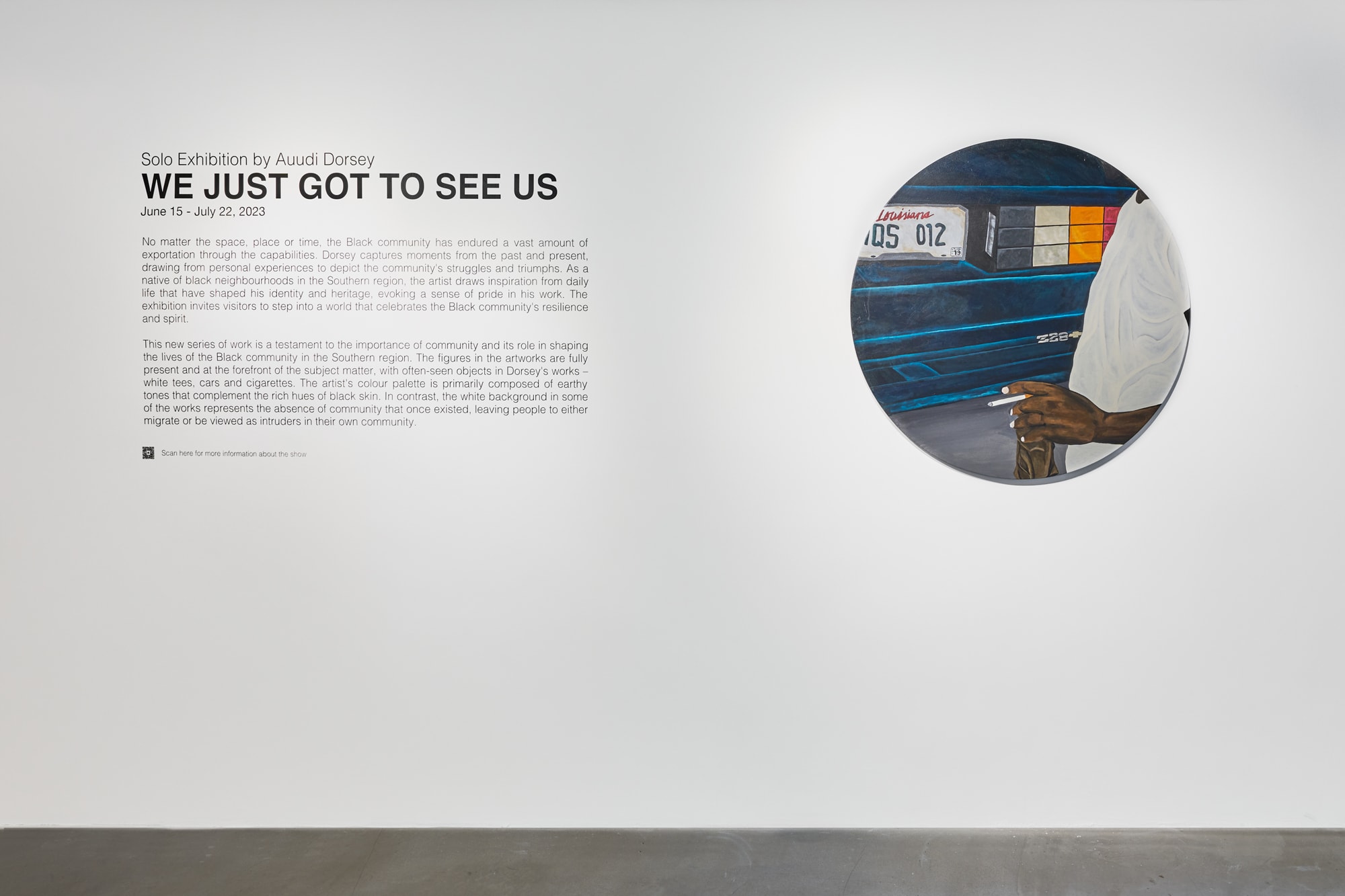
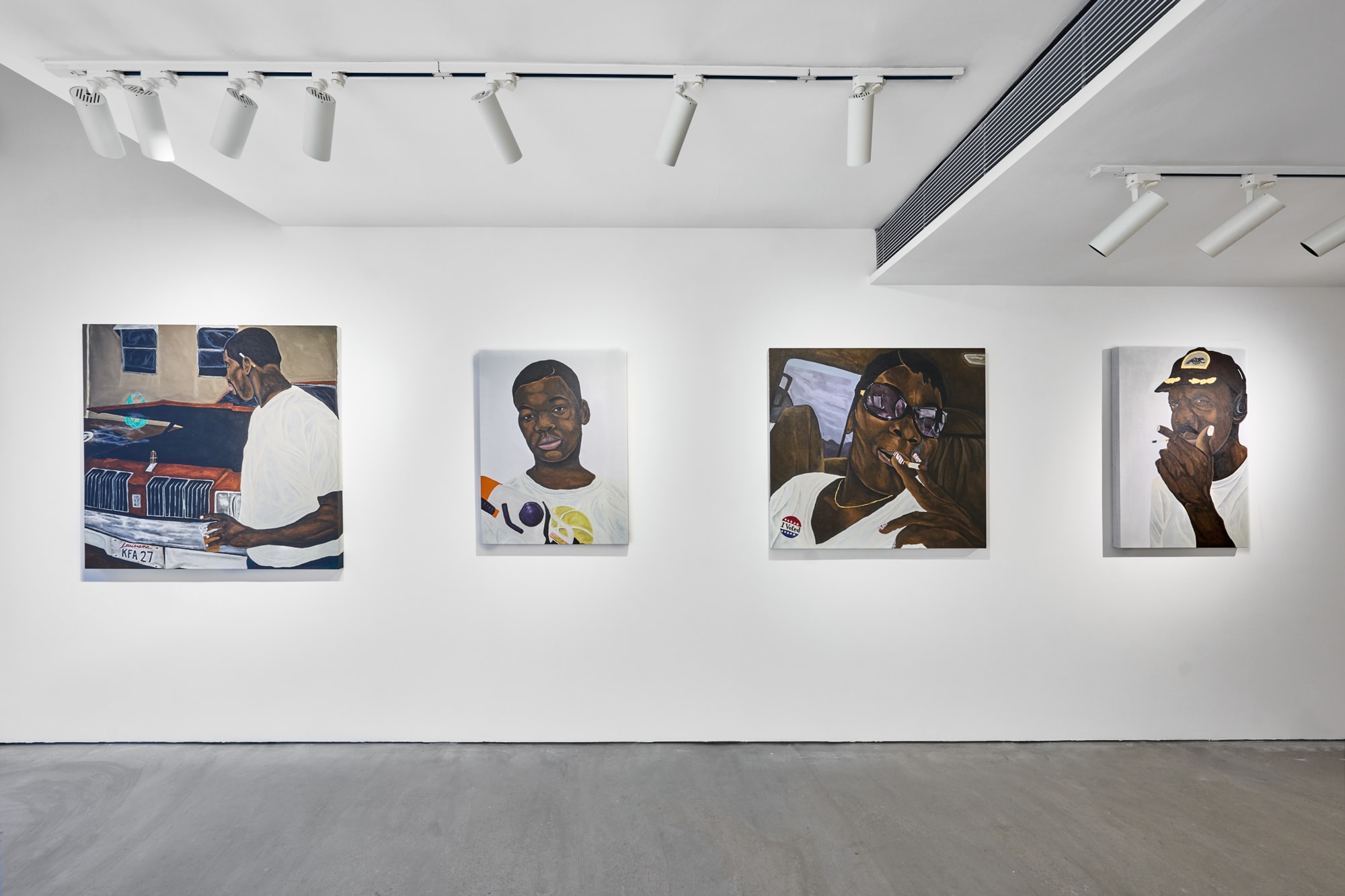
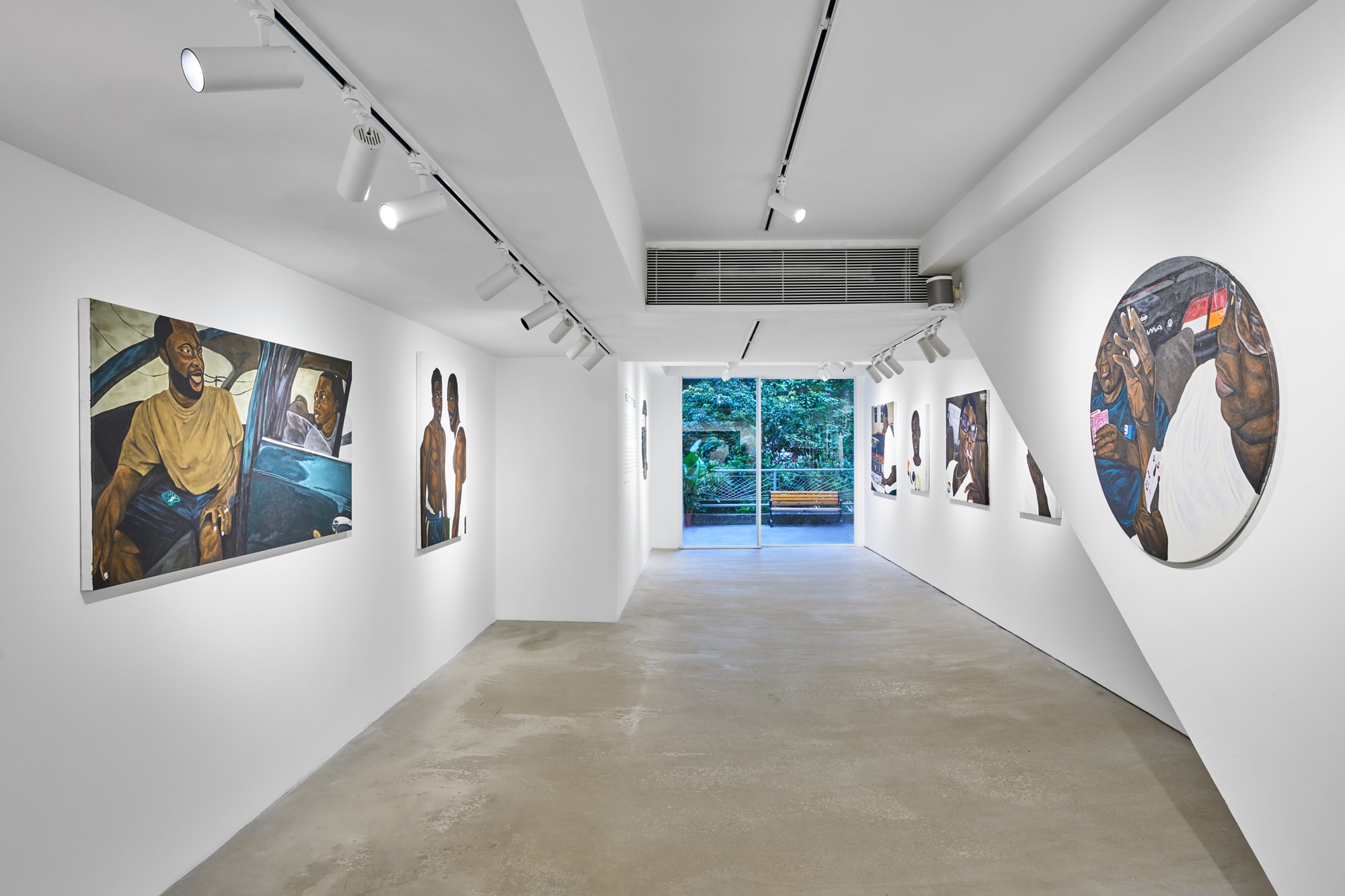
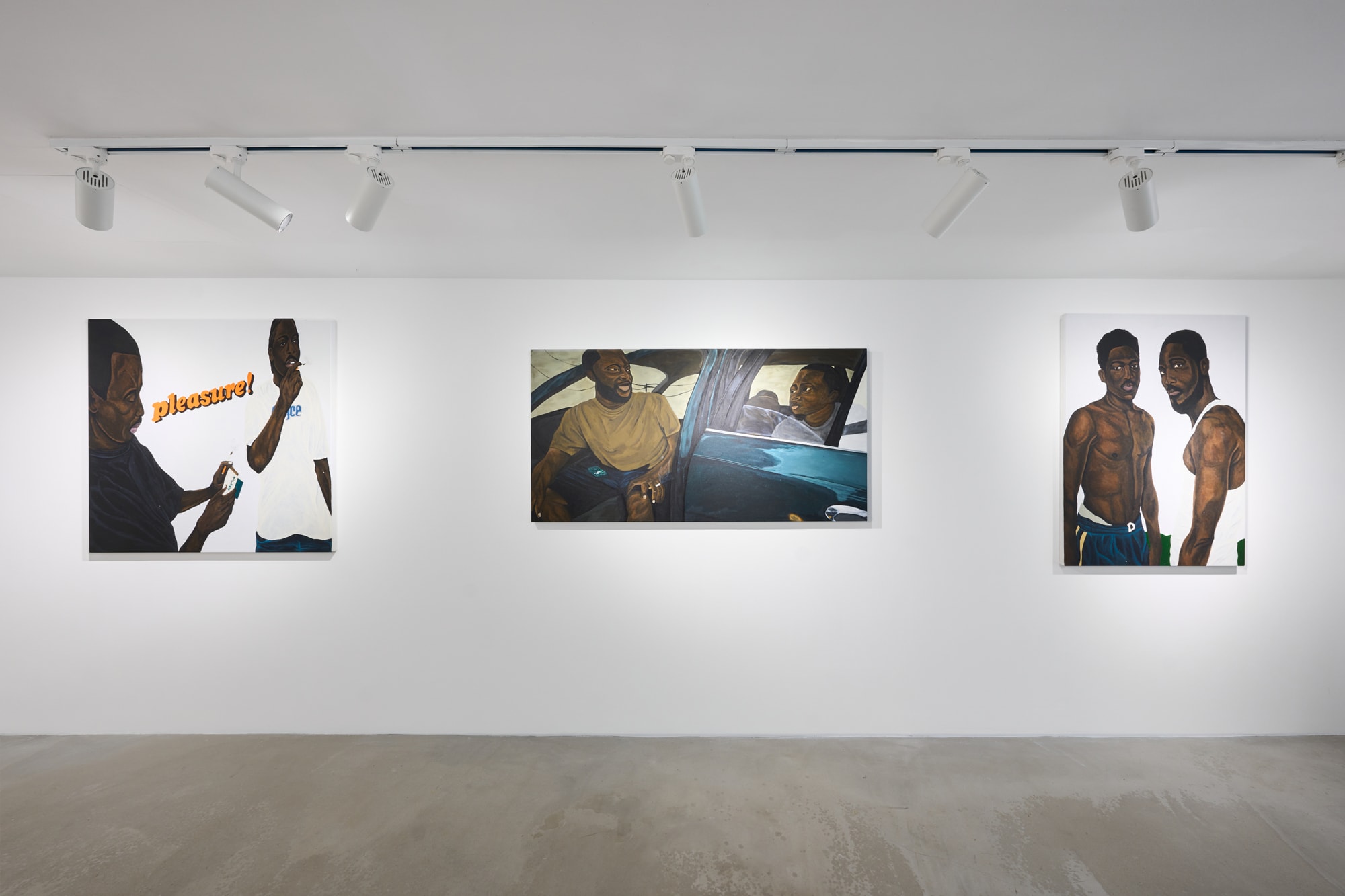
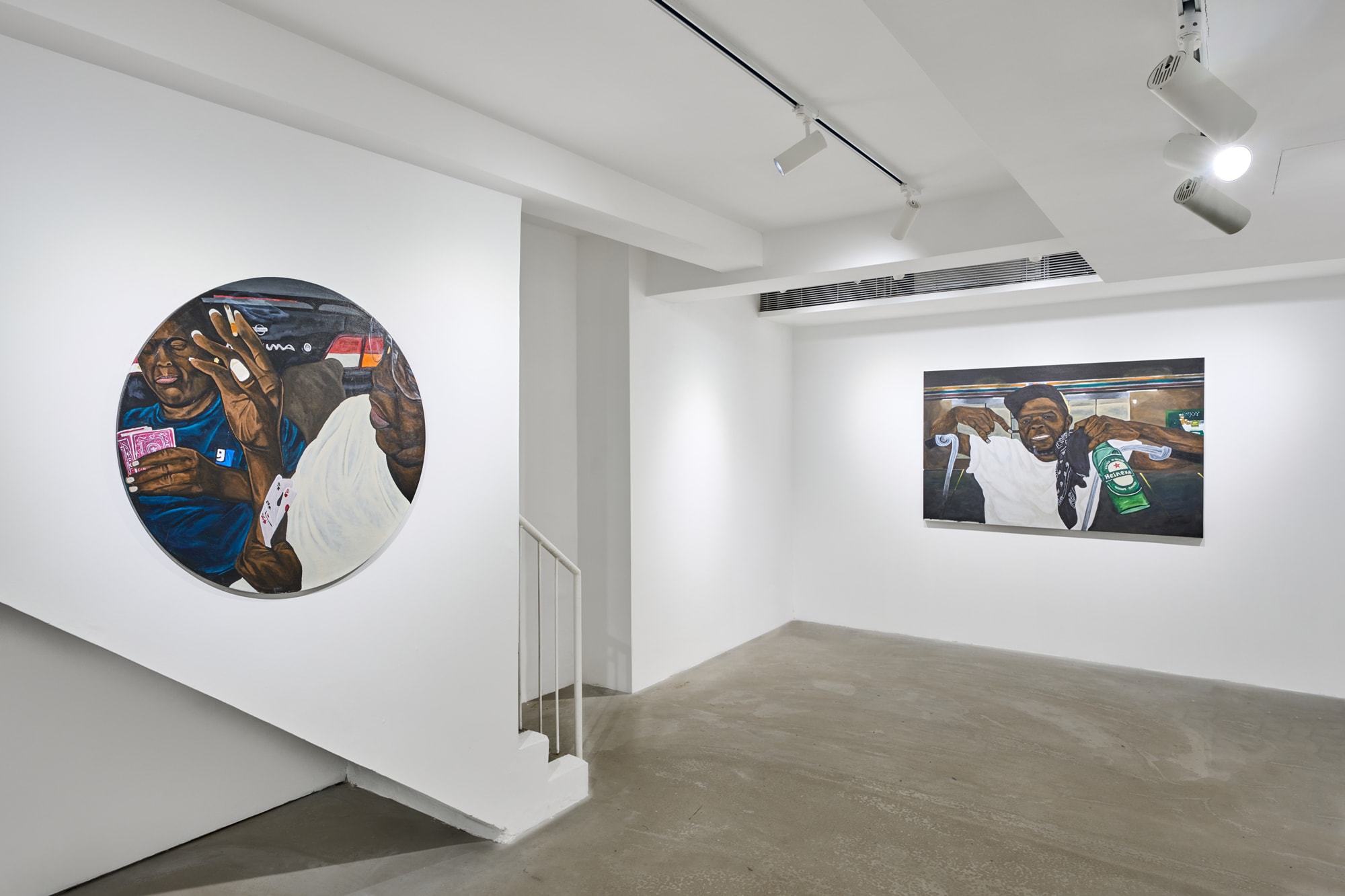
WOAW Gallery recently launched a solo exhibition entitled “We Just Got to See Us,” featuring the latest works by American artist Auudi Dorsey, held at the gallery’s Wan Chai location in Hong Kong. Showcasing 11 artworks, this exhibition offers a contemporary exploration of the daily experiences of African Americans in the Southern United States. Running from June 15 to July 22, the exhibition marks Dorsey’s debut solo show in Asia, bringing his unique perspective and artistic vision to a new audience.
With “We Just Got to See Us,” Dorsey delves into the profound resilience and enduring spirit of the Black community, capturing moments that transcend space, place, and time. Drawing inspiration from personal experiences and the vibrant black neighborhoods of the Southern region, the artist depicts scenes that reflect both the struggles and triumphs of the community. Through his art, Dorsey embraces his identity and heritage, instilling a sense of pride and celebration in his work.
At the heart of this series is the recognition of the integral role that community plays in shaping the lives of African Americans in the Southern region. The figures depicted in Dorsey’s artworks take center stage, immersed in everyday experiences and often surrounded by familiar objects such as white tees, cars, and cigarettes. The artist employs an earthy color palette that complements the rich hues of black skin, while the white background in some works symbolizes the void left by the erosion of community, resulting in displacement or a sense of being outsiders in their own neighborhoods.
Dorsey explains the significance of his work, stating, “Being able to express any kind of emotion with a contemporary context allows me to engage with the environmental, social, and political climate experienced by black individuals in the Southern region. These bodies of work depict moments from the past and present, drawing from personal experiences. I want the people of my community to be seen and honored because it is the people who hold the community together.”
Explore our in-depth interview with Auudi Dorsey as he provides unique insights into the artworks featured in the exhibition and shares his overarching artistic practice.
Can you tell us about the concept behind your exhibition “We Just Got to See Us” and how it explores the experiences of African Americans in the Southern region of the United States?
The idea of “We Just Got to See Us” was to showcase visibility to the black community. I wanted to paint moments of what it was like for me growing up in a black neighborhood in the south. I’m interested in painting about people that I related to and places I’ve come from. My approach was how can originate my own experience of what consume me and puzzle together the feeling of community.
What inspired you to focus on quotidian scenes of the African American community in your artwork, and how do you draw from your personal experiences to depict their struggles and triumphs?
New Orleans is such a creative hub for black people, jazz was created here and so many other things. I find so much beauty in the resilience of my community. Being able to walk down the street hear a guy playing a musical instrument or watching someone clean their old school that’s has been worked on for months excites me. The effort and time we put into turning nothing into something. I observe so much of what goes on around me and whenever makes me feel a sense of memory or emotion I love to run to my sketchbook afterwards.
How do you believe your artwork contributes to a celebration of the resilience and spirit of the Black community, and the importance of community itself?
I hope my works inspire others to see self-worth. Kids in the future now will be able to travel and see more works of African American artist in great spaces around the world. That idea along I believe sparks inspiration and celebration of black live.
Could you share a bit about your background and journey as an artist, and what influences have shaped your artistic style and approach?
I’ve always been a visual learner growing up. I noticed I had a great way of processing something and sketching it very well. Over the years I kept a pencil and sketchpad around me most of the time. I grew up with a father who was a mechanic, so I found a love to sketch whatever vehicle I seen him working on. That’s why you may see so many works surrounded by the idea of a man and a car. I believe I created my first painting in Junior High since then it’s been a journey of being the student and being the creator.
“For me, art helps immortalized moments, people, and places we have experience in our lifetime.”
Can you discuss your artistic process and any specific rituals or techniques that you follow?
I like to treat my process as if I’m building a home or a car. One thing I enjoy doing before a day at the studio is to go for a run. It helps to clear my mind which allows for new ideas to come in. I enjoy trying to figure out how to channel to past and the present in works. Seeing certain vehicles, they may been own by a family member triggers such a nostalgia feeling for me. My phone also is used as my portable sketchpad so ill create what I feel in that moment immediately. I also dive into a lot of historical black photographer works as references sometimes to create thumbnails of a concept. Collecting old VIBE, SOURCE and DUB car magazines is about of my artistic ritual.
What role do you believe art plays in society, and what do you hope to achieve or communicate through your artwork?
Arts is what shaped our reality. It’s the mirror to everything around us rather its good or bad. For me, art helps immortalized moments, people, and places we have experience in our lifetime.
Can you talk about any notable exhibitions or projects you have been a part of in the past, and how you feel about your first solo showing in Asia?
I’ve been grateful to show works at 1-54 fair London, New York, Dallas Art Fair, Untitled Art Basel, and solo exhibition in Italy last year with LUCE GALLERY. Few or my works have already been placed in Museum across Asia so doing my first exhibition in Asia is awesome.
Are there any upcoming projects or collaborations that you are excited about and would like to share with us?
I’m currently back in the studio working on new conceptual works that’s off the canvas, I have experience in working producing 3-dimensional works so to be able to bring that back into my crafts is exciting. I have an residence in London with PM/AM collective and solo exhibition in the Fall with Art Life.
WOAW Gallery
5 Sun St.
Wan Chai,
Hong Kong
ART: HOW KINFOLK IS RECLAIMING BLACK HISTORY WITH AR
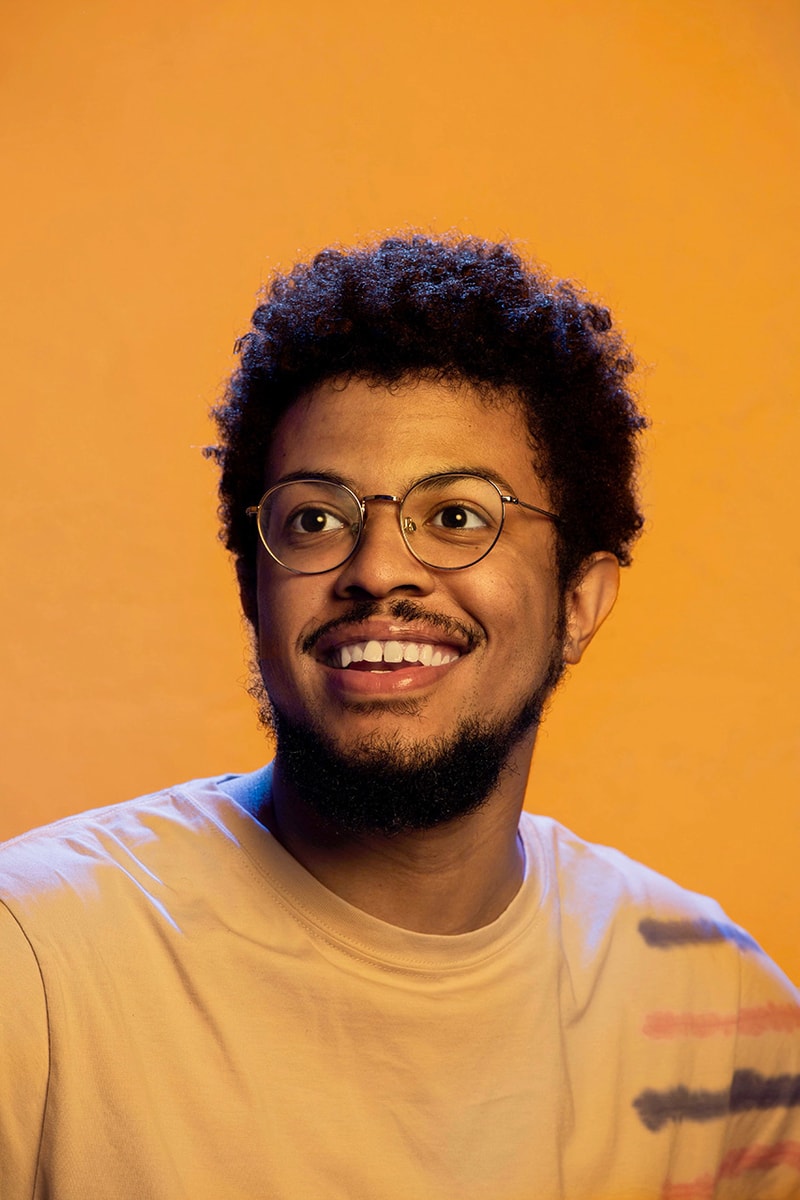
In a day and age where elected officials are banning ethnic studies and attempting to further re-write history, augmented reality app Kinfolk is working to reclaim it.
Established in 2017, co-founder Idris Brewster launched a campaign to remove the statue of Christopher Columbus in Columbia Circle in New York. While in 2023, we’re well aware of the Spanish colonizer’s heinous actions and have gone so far as to refer to the anniversary of his arrival to America as Indigenous People’s Day, his legacy lives on through monuments in some of our country’s most populated cities. As marginalized and underserved communities continue to endure systemic oppression, whether it be through voter suppression or kicking children out of school because of their hairstyles, holding onto physical symbols of that oppression will only keep us in the past and delay meaningful change.
History has long since been written by the victors, skewing our collective narrative to one that largely leaves out the voices and experiences of others. Seeing ourselves as champions and owners of our stories is vital to understanding our past and moving more confidently into our future. Using its innovative technology to uncover virtual monuments wherever you are, Kinfolk lives up to its name, creating a sense of connection and community with an otherwise unknown ancestral history.
Most recently, the platform hosted an immersive installation, Land of the Blacks at the Tribeca Film Festival, enabling visitors to uncover previously lost stories, humanizing Sojourner Truth by stripping her of the white gaze, while introducing other hidden figures.
Continue scrolling to learn more about Kinfolk and hear from co-founder Idris Brewster below.
What initially sparked your interest in using technology to uncover Black and brown histories?
For me, it was the lack of agency that I felt with the loss of that history and not having a real way to recover that and share it with others. It started out in 2017 as we were trying to advocate for the removal of the Christopher Columbus monument. We would bring folks together and provide augmented reality experiences for people to see the true story of Columbus, as well as other heroes we wanted to represent instead. What ended up happening was that the city, which was determining at the time, whether they should remove the monument or make a landmark, decided to keep it and make it a landmark and so for us, it was a defeat, but it also showed us that we can’t really wait for our government to take action. We have to figure out a way to do it ourselves and not have to rely on others. There’s an infinite amount of lost history from Black and brown communities that needs to be uncovered, especially in America. Technology allows us to close the gap and better preserve, as well as, archive our history. With AR, we can share it in a way that’s fun and exciting because it creates a way for people to learn about these histories and have access to them without having to pay or wait for cities to create monuments. Kinfolk is all about taking it into your own hands.
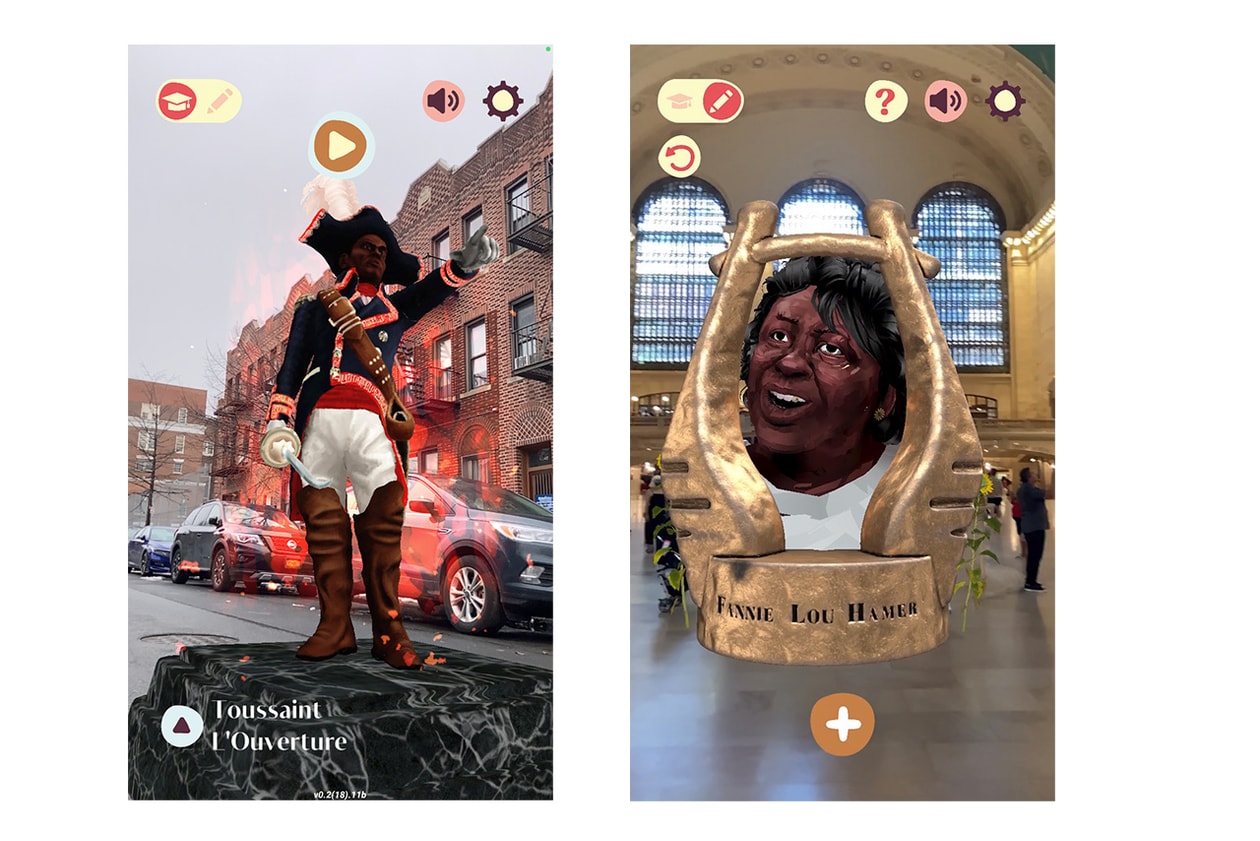
Kinfolk Tech
Why is it so important for certain groups to reclaim their history, as well as play an active role in that process?
It’s incredibly important because our collective consciousness plays a large role in our actions and what we are building and doing. Right now, America is void of perspectives from Black and brown communities, in a very tangible way, as spaces in New York City are becoming more gentrified, losing the reminders of what was there. That’s why we have people coming from outside of New York into places like the Bronx and Brooklyn and not respecting those areas and making TikTok videos of how awful bodegas are. There’s a loss of respect and community within New York City, especially and other gentrified areas. It doesn’t allow us to move forward in an equitable way if we can’t put the pieces together around our past into our present. I think we’ll just repeat the mistakes of our past. People will doubt the impact of representation, but having voices uplifted to a large national and global stage, it’s so important to be able to achieve the change happening on a local level and in cities around the country.
Because the country is further banning these histories, that’s all the more reason to steward and shepherd our history together.
I really feel that to start, we need to be able to preserve our history so that we know where we came from so we can move forward in a better way. People always say history is boring, but that’s also if we think about it from a white Eurocentric perspective of written history. But what about the dynamic ways in which Black and brown folks have captured history? That’s through the way we moved, Black girls’ hand games, which is now imbued in every part of the culture, not to mention, oral storytelling. The technology is also important because we can create videos that result in a more engaging, animated experience. Up until this point, it’s been hard to do that in a way where people can feel immersed in history, but I think that’s why AR is so crucial because it can really capture that dynamic lived experience of Black communities that maybe haven’t been respected in the ways that archives have been built in the past.
Can you see the tangible effect Kinfolk has had in reclaiming history and actively playing a part in its uncovering?
I was demoing Kinfolk at a festival the other day and there was a group of five year olds who were just fighting over the iPad and engaging with it and it was the most beautiful thing I’ve ever seen. So that was really exciting for me, but I do think there is a hesitancy because this technology hasn’t been built for us. White people have largely been the ones building these platforms. Unless you build your own complex website, people are putting these archives on Instagram or TikTok, but should we trust them with that precious community data? I don’t think so.
There hasn’t really been a platform out there that Black and brown folks, specifically, can trust to respect their histories. Having a Black-led platform can really create a space where we can build trust with the communities that we work with. Technology should be an opportunity to rewrite the inequities of our system and our world, but that’s not at all how it’s being used right now. Kinfolk is trying to be an example of how we can imbue more culture and equity into the systems that we’re building.
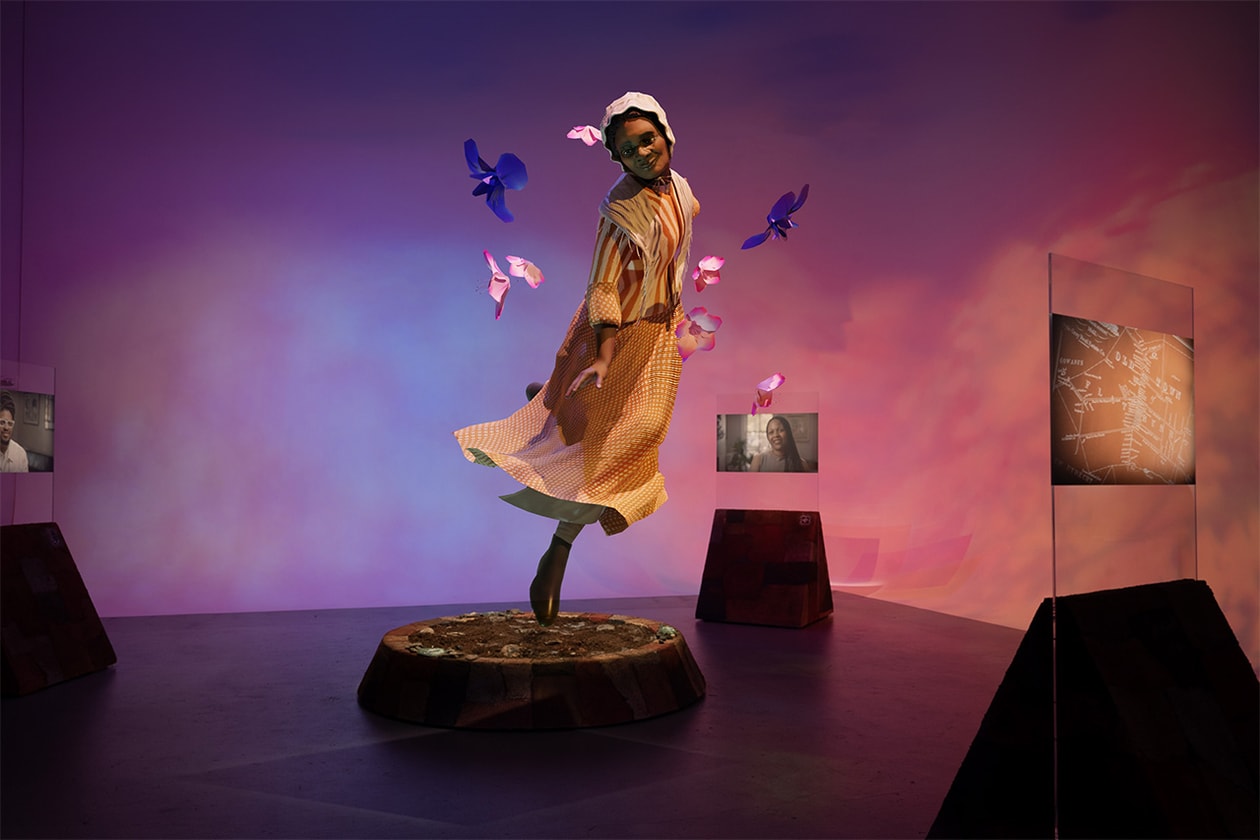
Kinfolk Tech
Could you share the inspiration behind your recent installation, Land of the Blacks at Tribeca?
As a person who’s building technology, if I think about my personal relationship with it, I’m trying not to be on my phone for five plus hours a day. I’m trying to connect more with nature. We use a tree stump as the anchor and basis for our AR monuments, using Kinfolk as that bridge between the physical and digital worlds. That’s why it’s important for us to build out an experience that connects people with their land and their environment, as well as with one another. When you’re at Tribeca and you see the installation, there’s four or five people that have their iPads, they’re all walking around the center altar and it feels like a community-based experience.
As we’re moving forward with Kinfolk, we’re going to build in more ways for users to not only to experience an installation, but to be able to add their voice as a mark into the spaces. That way, when people come and experience a monument, they can see the present day reactions, thoughts and experiences of folks who visited that space.
How important is community to the Black and brown historical narrative?
I think individualism is an inherently Eurocentric thing. The collective is always how my family has thought. I think if we go back to Africa, it was always a collective experience. With our monuments, we specifically work with community members on them. It’s not just about creating these monuments and putting them out there and having people react to them. It’s about getting people involved in that imagination and creative process from the jump.
Community is usually also defined in geographic terms, but our struggles are common across the world. It’s really something empowering for me to see the work that we’re doing at Flatbush and have someone in Taiwan or Mozambique or another country experience it. With a digital sculpture aspect, you don’t necessarily need to speak English to be able to maybe understand some of our monuments, so being able to connect folks and communities across borders is paramount. I think at the end of the day, it is about boasting up our own sense of collective consciousness. Because the country is further banning these histories, that’s all the more reason to steward and shepherd our history together.
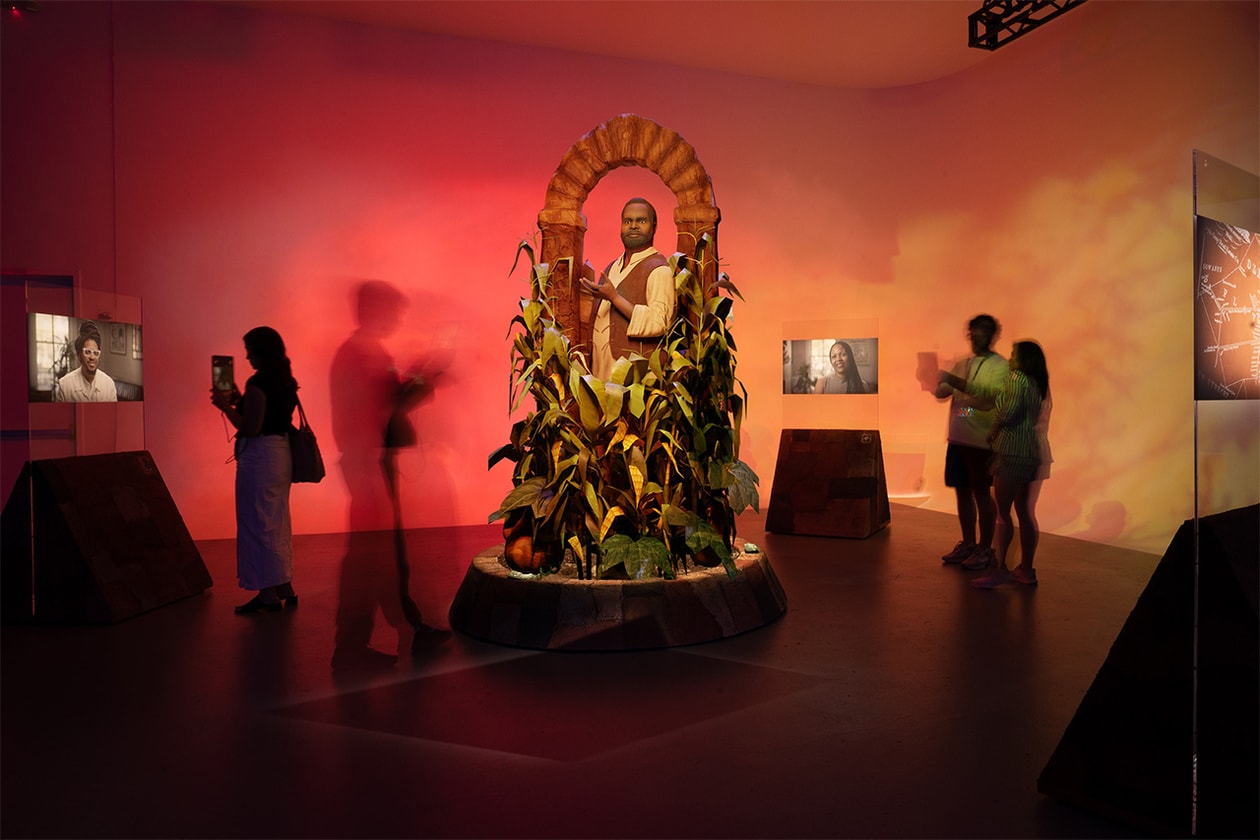
Kinfolk Tech
ART: BARBICAN ART GALLERY UNVEILS NEW EXHIBITION, "RE/SISTERS: A LENS ON GENDER AND ECOLOGY"
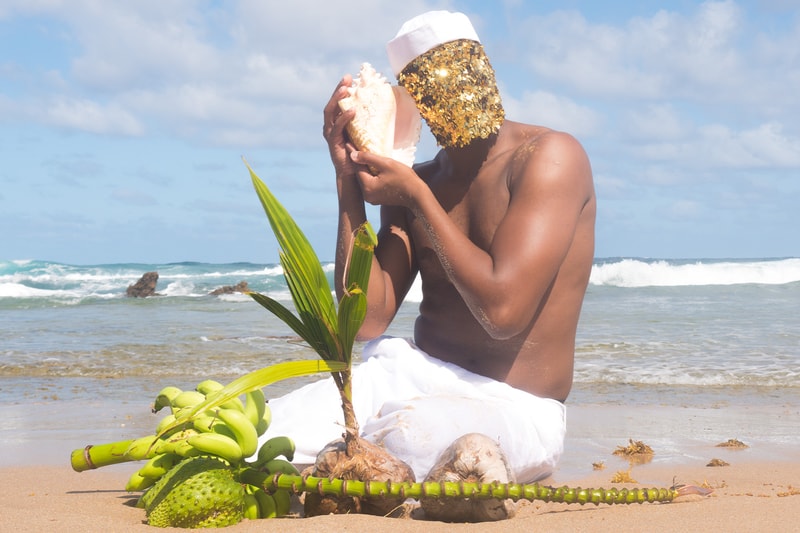
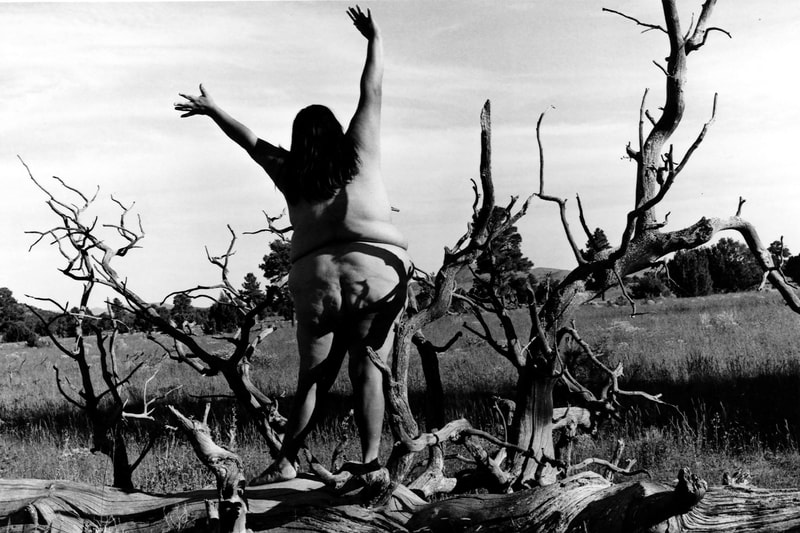
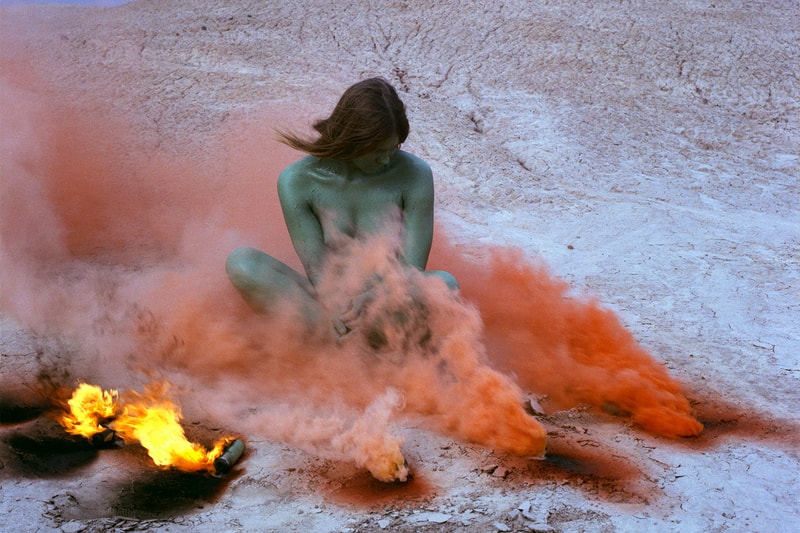
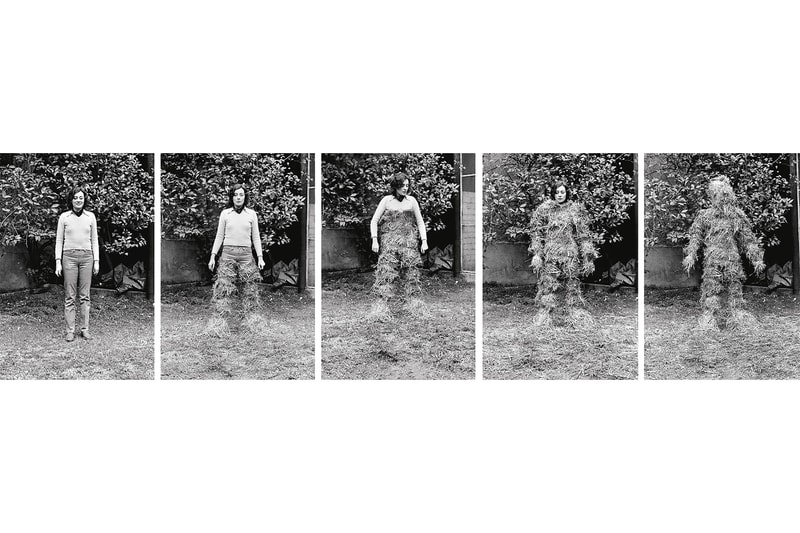

An exploration of the relationship between the oppression of women and the degradation of the planet.
Barbican Art Gallery is set to host “RE/SISTERS,” an exhibition exploring the link between gender and ecology. The show aims to highlight the systemic connections between the oppression of women and the degradation of the planet.
Almost 50 international women and gender non-conforming artists will present their works, spanning photography, film and installations. “RE/SISTERS” unites these artists’ urgent engagement with the ongoing ecological crisis and their protest against it. The collection emphasizes the importance of environmental and social justice. It also features artists from the Global Majority and Indigenous communities, depicting the inseparable bond between these causes and offering a vision of equity where both people and the planet are respected.
The showcase ultimately challenges the patriarchal order that exploits natural resources and oppresses marginalized bodies. Through roughly 250 works, “RE/SISTERS” provides a roadmap for civil disobedience and protest, encouraging a reconsideration of our relationship with the Earth. It tackles unequal power structures, advocates for empowerment and reflects an intersectional brand of eco-feminism that is diverse, inclusive and decolonial.
“RE/SISTERS: A Lens on Gender and Ecology” opens at Barbican Art Gallery from October 5, 2023, to January 14, 2024. Take a look at some of the showcased artworks in the gallery above.
In other art and design news, Alasdair McLellan’s Home and Away book captures a youth that transcends time.
Barbican Art Gallery
Barbican Centre,
Silk St,
London EC2Y 8DS
CARMEN ELECTRA AND JENNY MCCARTHY SIZZLE IN SKIMS' LATEST CAMPAIGN



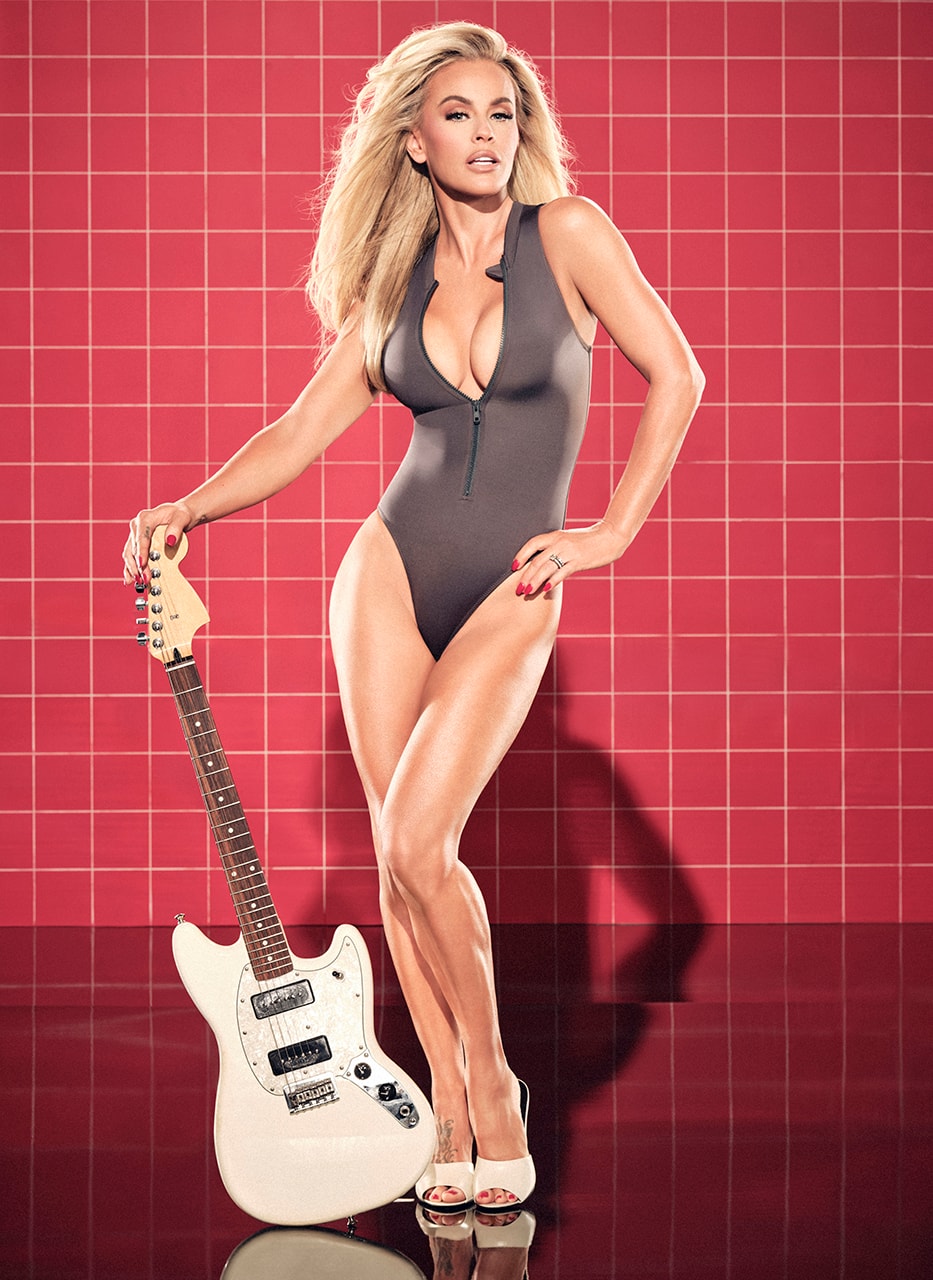

SKIMS is going back to the ’90s, reuniting icons Carmen Electra and Jenny McCarthy.
The pop culture legends prove sexy does not have an age limit as the two women are each other’s biggest supporters. “I couldn’t be more excited to be a part of SKIMS’ latest campaign. The energy on set was incredible, especially shooting alongside Carmen, who looks amazing. It felt like we were back in the ’90s and years later we’re still having fun,” Jenny shares in an exclusive press release.
Heating things, up the blond bombshells embrace the summer vibes, washing cars and eating ice cream in SKIMS essentials. The vivacious actors show off their curves in the waitlist-inducing triangle top and dipped tie bikini. The zip front sleeveless and scoop neck one piece also make an appearance in the soapy and sudsy campaign, alongside the tank bikini top and mid-waist bottoms.
“Being reunited with Jenny for this SKIMS campaign was such a dream,” Carmen continues. “”Not only does she still look incredible, she also brought the best energy to set and was my biggest cheerleader. I’m so happy we’re able to share in this iconic moment together.”
Take a look at the campaign in the gallery above, which officially launches on July 6. SKIMS’ swim collection can be shopped on the brand’s website.


